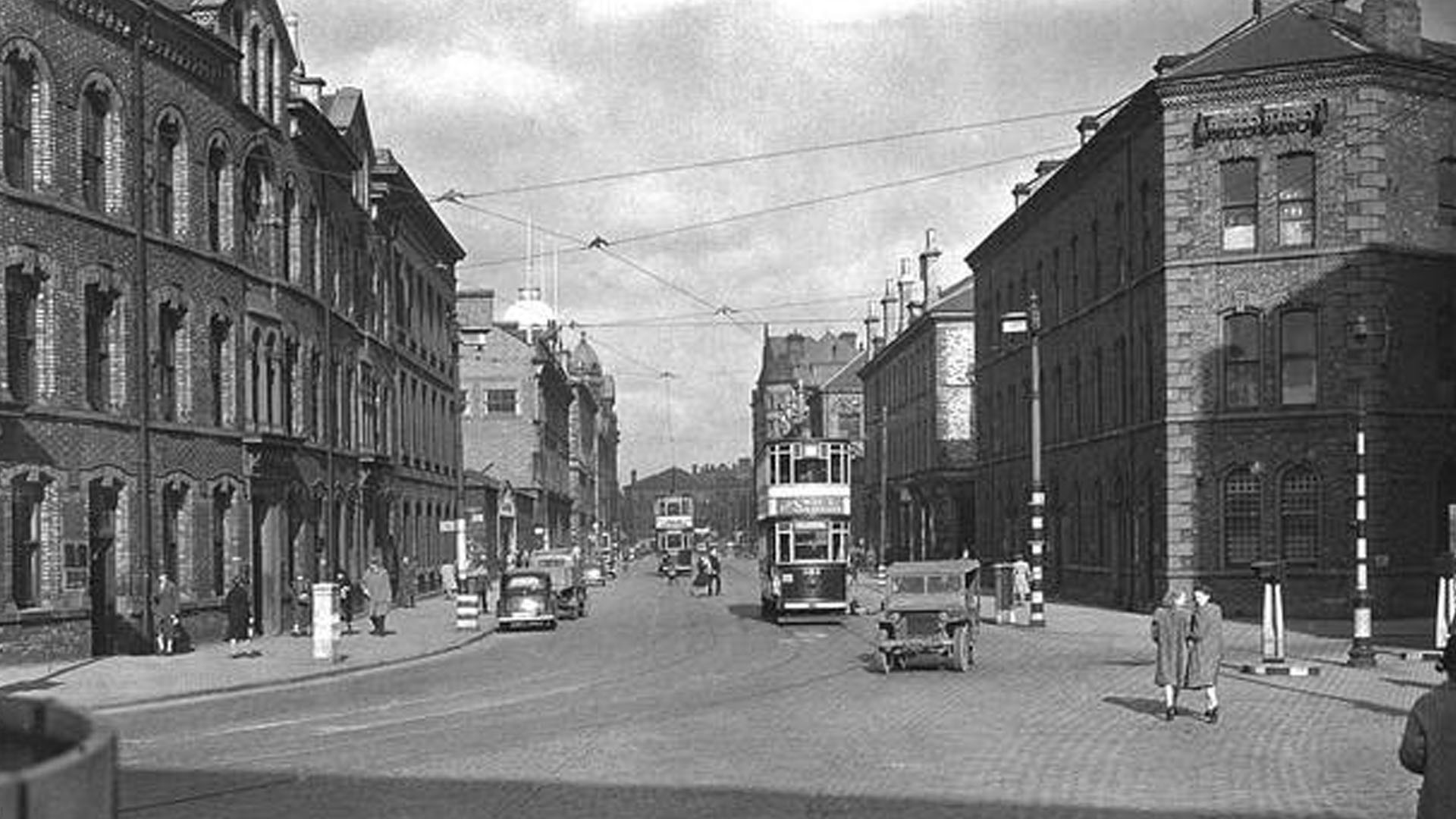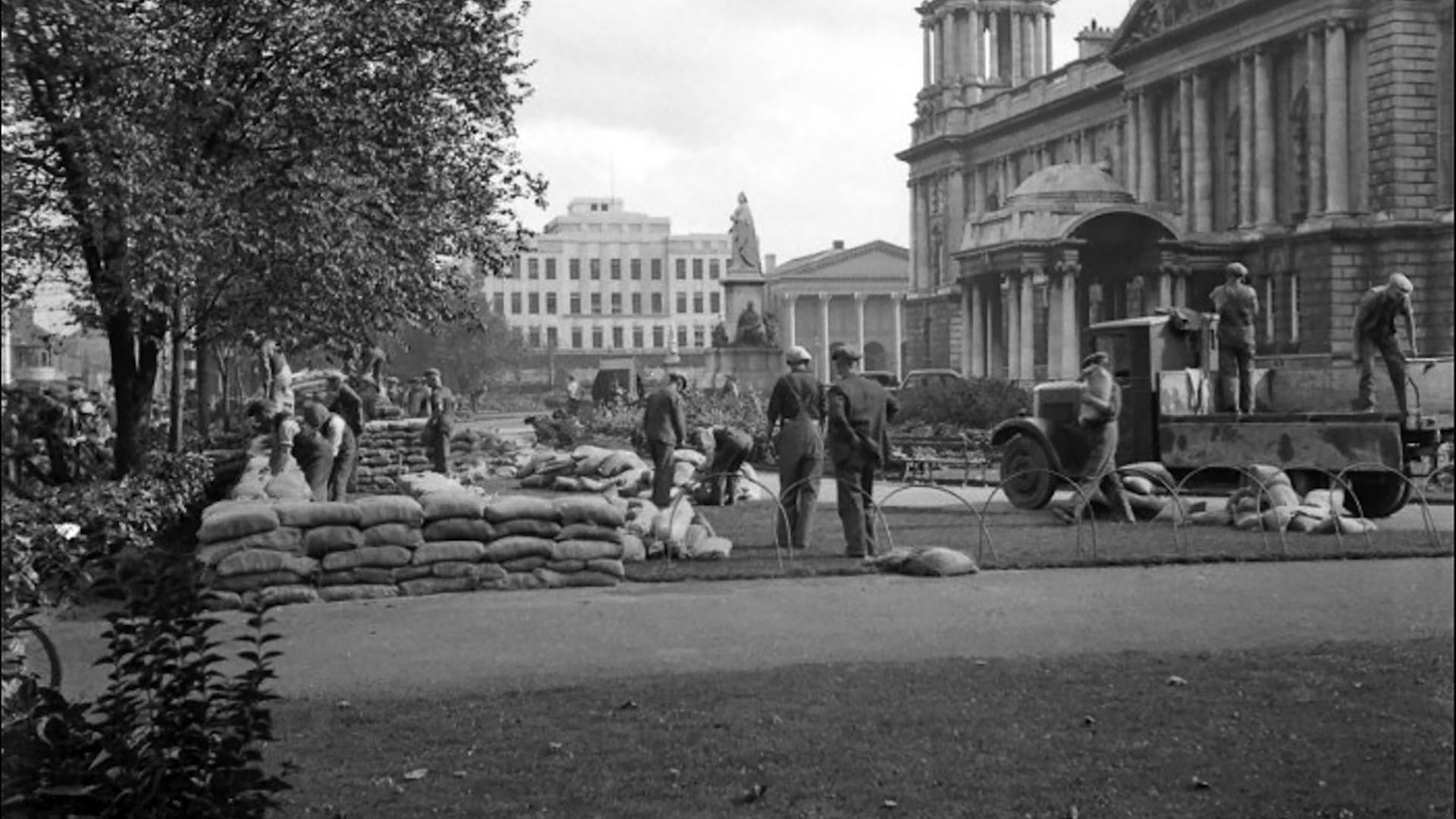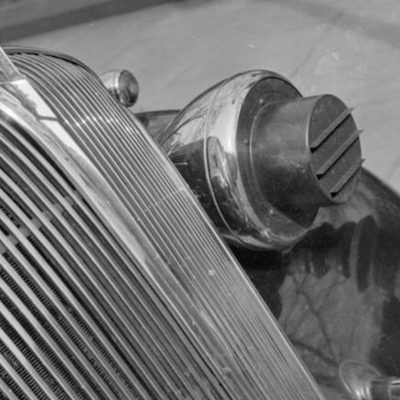As in many countries across Europe in 1939, the threat of war loomed large in Northern Ireland. In the city of Belfast, the Belfast Telegraph and the Belfast Newsletter spoke ominously of the impending conflict.
The Belfast Telegraph newspaper reported queues of young men outside the British Army Recruitment Office on Clifton Street, Belfast each night of August and September 1939.
The Blackout
Throughout Great Britain and Northern Ireland, authorities readied for The Blackout. In Belfast, public transport vehicles took on a coat of dull blue paint and had their headlights dimmed. Other vehicles had been set aside by authorities for use as First Aid Posts or ambulances. Employees of the Belfast Corporation painted bands of white paint on kerbstones, lamp posts, telegraph poles, and trees. This would hopefully reduce the number of accidents caused by the darkness.

Belfast Telegraph Photo: A view of Bedford Street, Belfast looking towards Donegall Square from the corner of Ormeau Avenue on 6th October 1944. Note the white striped markings on lamp and signposts to help drivers in the blackout, as well as the old Belfast trams and a United States Army Willy's Jeep. Copyright Belfast Telegraph.
Civil Defence
Across the cities, towns, and villages of Northern Ireland, Civil Defence volunteers distributed gas masks in 1939. Most such volunteers still wore no official uniforms. The reopening of trenches in public parks and at schools took place. After the Munich Agreement of 1938, a hopeful public had filled many of them in.

